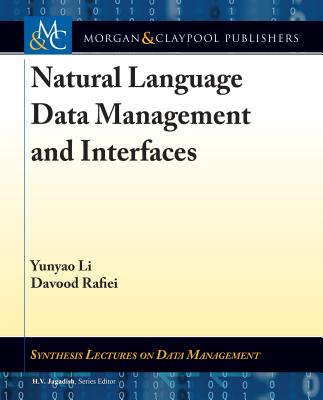Deep Learning and XAI Techniques for Anomaly Detection: Integrate the theory and practice of deep anomaly explainability
暫譯: 深度學習與可解釋人工智慧技術於異常檢測:整合深度異常解釋的理論與實踐
Simon, Cher
- 出版商: Packt Publishing
- 出版日期: 2023-01-31
- 售價: $1,700
- 貴賓價: 9.5 折 $1,615
- 語言: 英文
- 頁數: 218
- 裝訂: Quality Paper - also called trade paper
- ISBN: 180461775X
- ISBN-13: 9781804617755
-
相關分類:
DeepLearning
立即出貨 (庫存=1)
相關主題
商品描述
Create interpretable AI models for transparent and explainable anomaly detection with this hands-on guide
Purchase of the print or Kindle book includes a free PDF eBook
Key Features
• Build auditable XAI models for replicability and regulatory compliance
• Derive critical insights from transparent anomaly detection models
• Strike the right balance between model accuracy and interpretability
Book Description
Despite promising advances, the opaque nature of deep learning models makes it difficult to interpret them, which is a drawback in terms of their practical deployment and regulatory compliance.
Deep Learning and XAI Techniques for Anomaly Detection shows you state-of-the-art methods that'll help you to understand and address these challenges. By leveraging the Explainable AI (XAI) and deep learning techniques described in this book, you'll discover how to successfully extract business-critical insights while ensuring fair and ethical analysis.
This practical guide will provide you with tools and best practices to achieve transparency and interpretability with deep learning models, ultimately establishing trust in your anomaly detection applications. Throughout the chapters, you'll get equipped with XAI and anomaly detection knowledge that'll enable you to embark on a series of real-world projects. Whether you are building computer vision, natural language processing, or time series models, you'll learn how to quantify and assess their explainability.
By the end of this deep learning book, you'll be able to build a variety of deep learning XAI models and perform validation to assess their explainability.
What you will learn
• Explore deep learning frameworks for anomaly detection
• Mitigate bias to ensure unbiased and ethical analysis
• Increase your privacy and regulatory compliance awareness
• Build deep learning anomaly detectors in several domains
• Compare intrinsic and post hoc explainability methods
• Examine backpropagation and perturbation methods
• Conduct model-agnostic and model-specific explainability techniques
• Evaluate the explainability of your deep learning models
Who this book is for
This book is for anyone who aspires to explore explainable deep learning anomaly detection, tenured data scientists or ML practitioners looking for Explainable AI (XAI) best practices, or business leaders looking to make decisions on trade-off between performance and interpretability of anomaly detection applications. A basic understanding of deep learning and anomaly detection–related topics using Python is recommended to get the most out of this book.
商品描述(中文翻譯)
使用這本實用指南創建可解釋的人工智慧模型,以實現透明和可解釋的異常檢測
購買印刷版或 Kindle 版書籍可獲得免費 PDF 電子書
主要特點
• 構建可審計的 XAI 模型,以實現可重複性和合規性
• 從透明的異常檢測模型中獲取關鍵見解
• 在模型準確性和可解釋性之間取得適當平衡
書籍描述
儘管有令人鼓舞的進展,但深度學習模型的黑箱特性使其難以解釋,這在實際部署和合規性方面是一個缺點。
《深度學習與 XAI 技術在異常檢測中的應用》展示了最先進的方法,幫助您理解和解決這些挑戰。通過利用本書中描述的可解釋人工智慧(XAI)和深度學習技術,您將發現如何成功提取對業務至關重要的見解,同時確保公平和道德的分析。
這本實用指南將為您提供工具和最佳實踐,以實現深度學習模型的透明性和可解釋性,最終在您的異常檢測應用中建立信任。在各章中,您將獲得 XAI 和異常檢測的知識,使您能夠展開一系列實際項目。無論您是在構建計算機視覺、自然語言處理還是時間序列模型,您都將學會如何量化和評估它們的可解釋性。
在這本深度學習書籍結束時,您將能夠構建各種深度學習 XAI 模型並進行驗證,以評估它們的可解釋性。
您將學到什麼
• 探索用於異常檢測的深度學習框架
• 減少偏見以確保無偏見和道德的分析
• 提高您的隱私和合規性意識
• 在多個領域構建深度學習異常檢測器
• 比較內在和事後可解釋性方法
• 檢查反向傳播和擾動方法
• 進行模型無關和模型特定的可解釋性技術
• 評估您的深度學習模型的可解釋性
本書適合誰
本書適合任何希望探索可解釋的深度學習異常檢測的人,無論是尋求可解釋人工智慧(XAI)最佳實踐的資深數據科學家或機器學習從業者,還是希望在異常檢測應用的性能和可解釋性之間做出取捨決策的商業領導者。建議具備使用 Python 的深度學習和異常檢測相關主題的基本理解,以便充分利用本書。
目錄大綱
1. Understanding Deep Learning Anomaly Detection
2. Understanding Explainable AI
3. Natural Language Processing Anomaly Explainability
4. Time Series Anomaly Explainability
5. Computer Vision Anomaly Explainability
6. Differentiating Intrinsic versus Post Hoc Explainability
7. Backpropagation Versus Perturbation Explainability
8. Model-Agnostic versus Model-Specific Explainability
9. Explainability Evaluation Schemes
目錄大綱(中文翻譯)
1. Understanding Deep Learning Anomaly Detection
2. Understanding Explainable AI
3. Natural Language Processing Anomaly Explainability
4. Time Series Anomaly Explainability
5. Computer Vision Anomaly Explainability
6. Differentiating Intrinsic versus Post Hoc Explainability
7. Backpropagation Versus Perturbation Explainability
8. Model-Agnostic versus Model-Specific Explainability
9. Explainability Evaluation Schemes
































